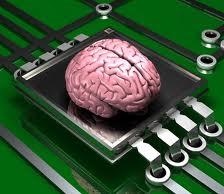Biosignal acquisition, conditioning and processing
Contact: Wouter Serdijn

However, the vast majority of electronic readout systems have been optimized for man-made signals, the magnitudes and frequencies of which are more or less uniformly or normally distributed and do not take into account the sparse signal properties of more natural signals, such as the ECG and action potentials.
Major challenges are thus 1) the scaling up of recording channels while accounting for the sparsity of the signal to achieve a low overall power consumption and form factor; 2) the digitization, bundling and transport of these signals; 3) signal processing, incl. signal analysis, clustering, classification, etc.
Projects under this theme
ATiNaRI: Asynchronous Time-domain Neural Recording Interfaces
AFFIP -- Atrial Fibrillation FIngerPrinting: Spotting Bio-Electrical Markers to Early Recognize Atrial Fibrillation by the Use o
STW and DHF project (14728). Program leader: Dr. N.M.S. de Groot (ErasmusMC), workpackage leader WP4, High Density Mapping Array: prof.dr.ir. W.A. Serdijn
InForMed
An Integrated Pilot Line for Micro-Fabricated Medical Devices
History
Medical Delta Cardiac Arrhythmia Lab
Part of a larger program (with Erasmus MC) to unravel and target electropathology related to atrial arrhythmia
ReaSONS 2 Demo: Realtime Sensing of Neural Signals Demonstrator
Demonstrator of recording tiny neural signals on top of the stimulus and artifact. NWO Demonstrator Grant.
MASSIVE - Autonomous Vital Sign Monitoring
In this research program, we work on electroceuticals that wirelessly receive power and wirelessly transmit vital signs like body temperature, ECG, EMG, EEG and ECoG.
REASONS – Realtime Sensing of Neural Signals
This project targets the development of a completely new readout system for measuring the so called electrically evoked compound action potential (eCAP) coming from the auditory nerve.
SINs - Smart Implantable Neurostimulators
In this research program we push the research and development of technology for research on and treatment of a multitude of brain disorders, a.o., tinnitus and addiction.
MSc students
- Mostafa Khaled Elboushi
- Tushar Sankaran Jaikumar
- Michael Treffers
- Andrew Goudswaard
- Lucia Cosenza
- Nikolas Konstantinou
- Leon Li
- Maria Zafeiropoulou
Alumni
- Karolis Navikas (2025)
- Cecília Molnár (2024)
- Juan Francisco Cabello (2024)
- Claudia Kruissel (2023)
- Sabine Josemans (2023)
- Patricija Burgar (2022)
- Cyril Weustink (2022)
- Hubald Verzijl (2021)
- Aitor del Rivero Cortázar (2021)
- Joey van Rijn (2021)
- Addaguduri Aditya Raman Bharadwaj (2021)
- Emmanouil (Manos) Kandilakis (2021)
- Erik Wirianto (2021)
- Caitlin Ramsey (2020)
- Gayatri Agarwal (2020)
- Abhilash Guru Dutt (2020)
- Corniel Joosse (2020)
- Alberto Gancedo Reguilon (2020)
- Areti Sfakianou (2019)
- Tim Beintema (2019)
- Esther Fridriksdottir (2019)
- Aurojyoti Das (2019)